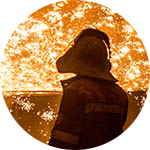What Is Carbon Content in Pig Iron?—— A Complete Guide?
2025-07-29 10:26:36 hits:0
Table of Contents
In the industrial field, pig iron holds an important position. It is a crucial raw material for steel production and is widely used in many industries such as machinery manufacturing and construction. Among the many characteristics of pig iron, carbon content is one of the key features. Today, we will delve into the carbon content of pig iron to give you a comprehensive understanding of this important indicator.
I. Basic Understanding of Pig Iron
What is Pig Iron?
Pig iron is an iron-carbon alloy obtained by smelting iron ore in a blast furnace. Its production process involves putting iron ore, coke, limestone and other raw materials into the blast furnace in a certain proportion, and a series of chemical reactions occur at high temperatures to finally obtain pig iron.
Composition of Pig Iron
The main component of pig iron is iron, and it also contains elements such as carbon, silicon, manganese, phosphorus and sulfur. Among them, carbon plays an important role in pig iron and is a key factor affecting its performance. The following will introduce the carbon content in detail.
Why is it Called Pig Iron?
The name "pig iron" is related to the block shape it was cast into in the early smelting process. Because its shape is similar to a small pig, it is called "pig iron".
II. Core Content of Carbon Content in Pig Iron
Percentage of Carbon in Pig Iron
Generally speaking, the carbon content in pig iron is between 2% and 4.3%. This percentage range is an important symbol that distinguishes pig iron from other iron-carbon alloys and has a decisive impact on its performance.
Range of Carbon Content in Pig Iron
The normal carbon content range of pig iron is 2% - 4.3%. Within this range, carbon exists in pig iron in different forms, affecting the performance of pig iron.
Why Does Pig Iron Have High Carbon Content?
From the perspective of the smelting process, during blast furnace ironmaking, coke is both a fuel and a reducing agent. During the reaction, a large amount of carbon will enter the iron. In addition, iron ore itself may contain a certain amount of carbon elements, coupled with the characteristics of the smelting process, resulting in a high final carbon content of pig iron.
III. Comparison of Carbon Content Between Pig Iron and Other Related Materials
Is the Carbon Content of Steel Higher Than That of Pig Iron?
The carbon content of steel is usually less than 2%. In contrast, the carbon content of pig iron is higher. This is an important reason for the significant differences in performance between steel and pig iron. For example, steel has better toughness, while pig iron is more brittle.
Carbon Content in Pig Iron and Cast Iron
Cast iron is obtained by remelting and processing pig iron. The carbon content ranges of pig iron and cast iron overlap to a certain extent. Generally, the carbon content of cast iron is also more than 2%, but the specific value will vary depending on the type of cast iron. At the same time, there are obvious differences between the two in the form of carbon existence and performance, which also makes them suitable for different industrial application scenarios.
IV. Influence and Application of Carbon Content in Pig Iron
Influence of Different Carbon Contents on the Performance of Pig Iron
The carbon content has a great influence on the performance of pig iron. When the carbon content is high, the hardness of pig iron is high, but the brittleness also increases, the toughness is poor, and it is not easy to process; when the carbon content is relatively low, the brittleness of pig iron will be reduced, the toughness will be slightly improved, and the hardness will also decrease accordingly.
Relationship Between the Use of Pig Iron and Carbon Content
Due to the different properties of pig iron with different carbon contents, their uses are also different. Pig iron with high carbon content, because of its high hardness, is often used to manufacture some parts requiring wear resistance, such as machine tool beds and engine cylinder blocks; while pig iron with relatively low carbon content can be used in some occasions that require a certain degree of toughness.
Types of Pig Iron and Carbon Content
Pig iron is mainly divided into types such as steelmaking pig iron and foundry pig iron. The carbon content of steelmaking pig iron is generally 3.5% - 4.3%. It is mainly used for steelmaking and can be converted into steel through processes such as reducing carbon content; the carbon content of foundry pig iron is usually 2.8% - 3.5%. Because of its good casting performance, it is often used to manufacture various castings.
V. Adjustment of Carbon Content in Pig Iron
The Carbon Content in Pig Iron Can Be Reduced
The carbon content in pig iron can be reduced through certain processes. One of the main purposes of reducing the carbon content is to produce steel. Through the decarburization reaction in the steelmaking process, the carbon content in pig iron can be reduced to the range required by steel.
How is Pig Iron Used to Produce Steel?
The process of producing steel from pig iron is mainly a decarburization process. First, put pig iron into the steelmaking furnace, blow oxygen into the furnace, make the carbon in pig iron react with oxygen to generate gases such as carbon dioxide, which are discharged, thereby reducing the carbon content. At the same time, some impurities in pig iron will be removed, and finally steel is obtained.
VI. Summary
Through the introduction in this article, we know that the carbon content of pig iron is between 2% and 4.3%, and this indicator has an important impact on the performance and use of pig iron. From the comparison with steel and cast iron, to the effect of carbon content on the performance of pig iron, and then to the adjustment method of carbon content, it can be seen that carbon content is one of the core characteristics of pig iron and has an undeniable position in industrial production.
Looking forward to the future, with the continuous development of industrial technology, the control and research on the carbon content of pig iron will be more precise to meet the diverse needs of different industries for the performance of pig iron.
Here, we would like to introduce our company, Tiegu. As a first-class distributor of pig iron in China, we operate more than a dozen well-known brands of pig iron in China and can provide high-quality Chinese pig iron to global buyers, helping the production and development of various industries. If you have a demand for pig iron procurement, please feel free to contact us.
If you want to master the comprehensive knowledge of carbon, silicon, manganese, phosphorus, and sulfur at once, the summary blog "Comprehensive Analysis of Pig Iron Parameters" will be a good choice.
We have conducted special analyses for each element in pig iron. For more details, you can click directly to view: [Carbon in Pig Iron], [Silicon in Pig Iron], [Manganese in Pig Iron], [Phosphorus in Pig Iron], [Sulfur in Pig Iron].
If you have any thoughts, please feel free to contact us for communication.
You can also share this article with more friends who are interested in the chemical composition of pig iron.
Contact Us
WhatsApp: 15256135588 (First 10 inquiries receive extra gifts)
E-mail:zbw@tiegu.net
Apply for Pilot: Click the link to get a customized solution (First batch of customers enjoy 20% discount)
Blog Author Profile
DAWN | Pig Iron & Castings Procurement Advisor 18 years in the foundry trenches give me an edge: I know how pig iron’s chemistry impacts casting quality and can troubleshoot defects like cracks and porosity. With a 1M MT/year pig iron and 60k MT/year casting output from our in-house factory, plus 200+ verified suppliers on our platform, we offer fast price comparisons. Expect a 24-hour inquiry response—my goal? Not just closing deals, but being your go-to partner in the foundry world.
18 years in the foundry trenches give me an edge: I know how pig iron’s chemistry impacts casting quality and can troubleshoot defects like cracks and porosity. With a 1M MT/year pig iron and 60k MT/year casting output from our in-house factory, plus 200+ verified suppliers on our platform, we offer fast price comparisons. Expect a 24-hour inquiry response—my goal? Not just closing deals, but being your go-to partner in the foundry world.

 en
en  fra
fra  de
de  ru
ru  ara
ara  gle
gle  it
it  jp
jp  kor
kor  th
th  zh
zh 


